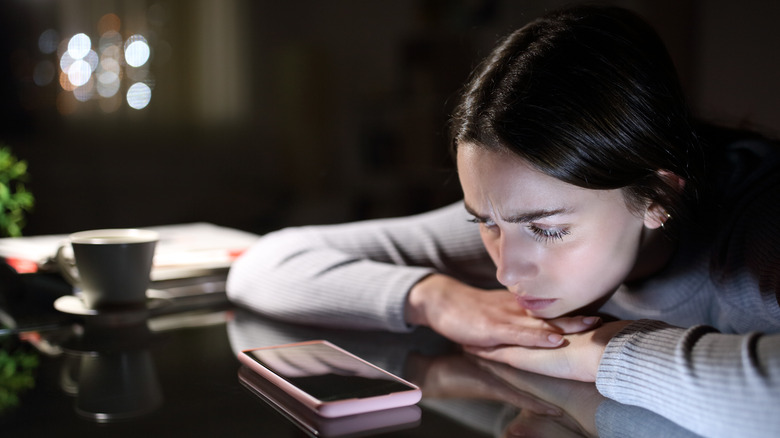Can Going 'Monk Mode' Fix Your Procrastination Problem?
When you're ready to snap out of goblin mode and get work done, you might want to take a cue from Buddhist monks — or at least that's what one trend on TikTok suggests. Browse the self-development and entrepreneurship corners of the platform and you'll surely come across the "monk mode challenge," a technique intended to boost focus and productivity. "The term ['monk mode'] is popular among CEOs and entrepreneurs, but essentially it is the practice of solely working and focusing on one task and not giving in to distractions, especially turning to your phone," Paula Allen, Global Leader and Senior Vice-President of Research and Total Wellbeing at TELUS Health, explained to Glamour.
However, like the traditional monk lifestyle, there are several other guidelines and health-conscious habits people include in their own versions of monk mode. One TikToker that goes by motivationfreedom says monk mode has three tenets: daily meditation, regular exercise, and abstinence from drugs and alcohol. Entrepreneur and content creator Iman Gadzhi treats monk mode as a quarantine, only seeing his girlfriend and mom during an eight-week period while he considers himself in monk mode. Additionally, he temporarily cuts indulgent foods, like sugar and caffeine, out of his diet.
The idea behind monk mode is to eliminate distractions and certain vices to boost productivity, especially if you've been sitting on a project for a while. But is sacrificing social media, drinking, and other comforts really worth it? Here's what to know before trying out the trend.
Monk mode could kick-start productivity
If phone notifications, post-party hangovers, and social obligations are derailing your productivity, monk mode may be the answer. And even if you don't totally give up time with friends or the occasional nightcap, for example, using monk mode to stay present when completing tasks can boost productivity and lower your stress levels. A 2008 study presented at the 2008 Conference on Human Factors in Computing Systems found that work interruptions result in a larger workload, increased stress and frustration, and more effort needed to complete tasks. Using monk mode to create distraction-free focus time can be one way to avoid interruptions.
Josh Wood, CEO of the hospitality company Bloc, can also attest to the benefits of monk mode. He told Insider that he uses the method during work hours, alerting his team and family that he won't be available for a couple of hours. He claims that his productivity is "five times better" than when he's working normally and notes that the key to making the hack work is to have a goal in mind for each monk mode session.
When taken to extremes, monk mode can be destructive
When done in short bursts, monk mode can be an effective way to overcome procrastination. However, the monk mode trend seen on TikTok is often extreme, where checking in with friends and going out for dinner are prohibited for weeks at a time. This all-work, no-play approach could lead to burnout, which can undo much of the progress made while in monk mode.
Moreover, social isolation can be a recipe for disaster. "In completely isolating yourself, you can get lonely, fall into a cycle of working too hard, and get caught up in your own thoughts," Paula Allen told Glamour. "You may miss out on essential communication, support, and interactions with others, all of which are fundamental to the functioning of a team and emotional and mental well-being." Instead of completely shutting yourself off from the world, it can be healthy to incorporate some time for productive collaboration (and maybe a chill brunch or relaxing happy hour at some point) into your monk mode.
Finally, the deprivation that goes into living like a pseudo-monk can often backfire. If, for example, you plan to party hard once you're out of monk mode (like one TikTok user), you might be more likely to drink excessively the next time you do imbibe. According to Psychology Today, a similar pattern can happen with food, shopping, and other temptations. Instead of switching between extremes, balancing productivity with pleasure may be more sustainable in the long run.


